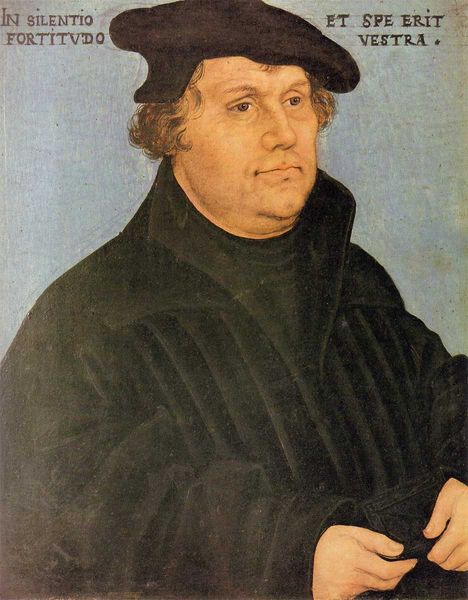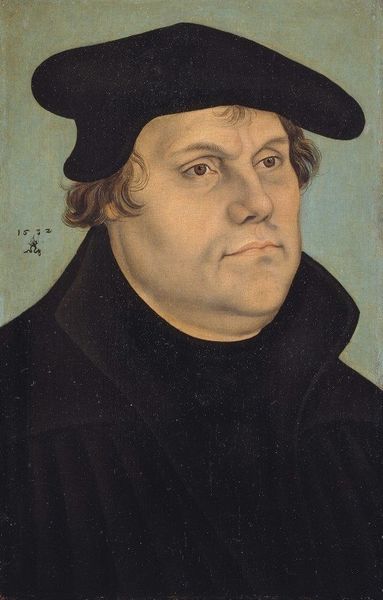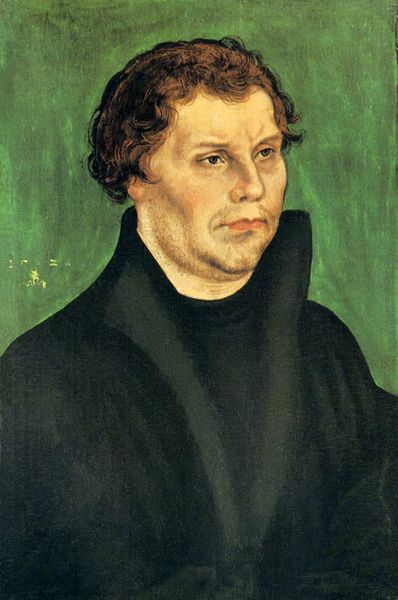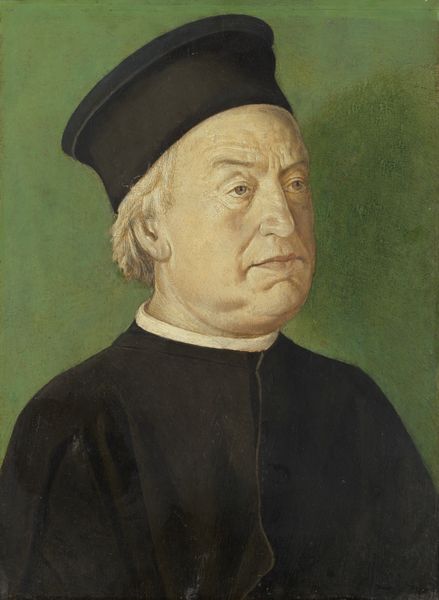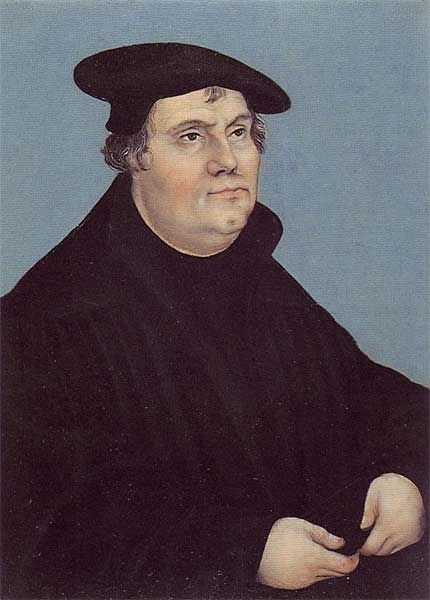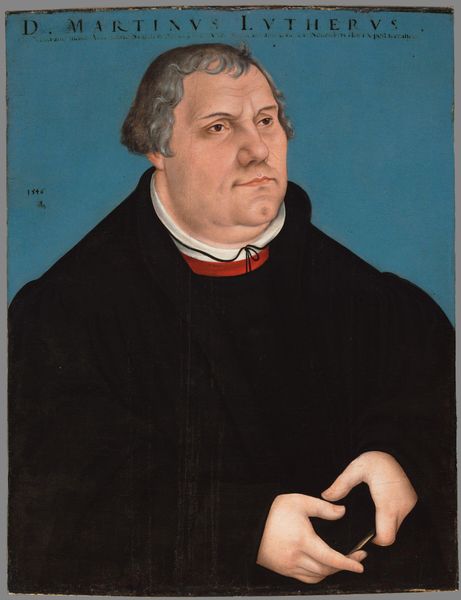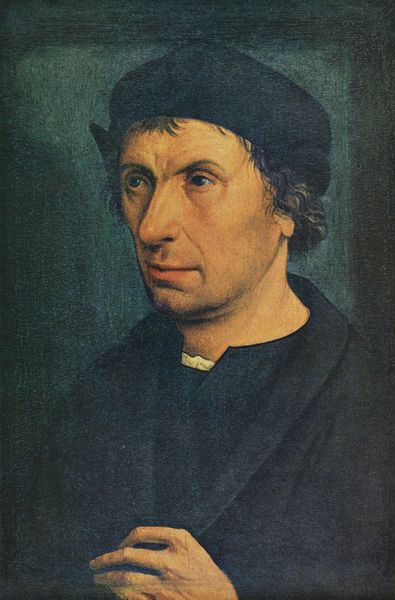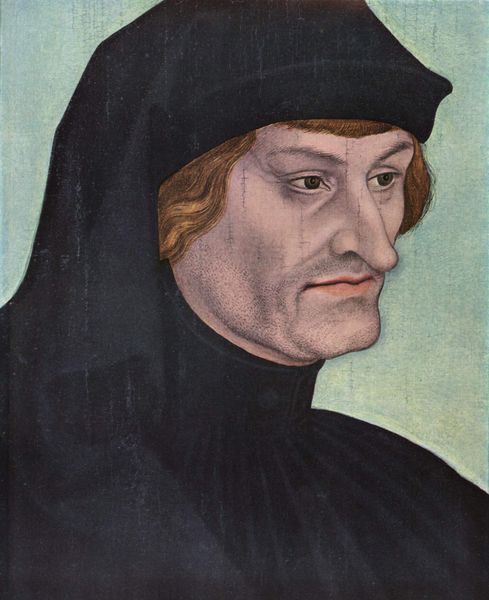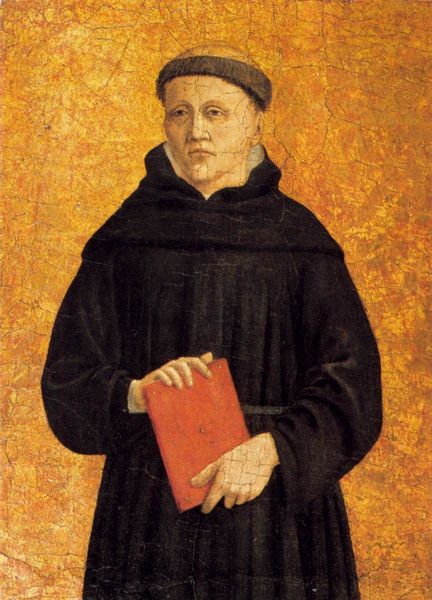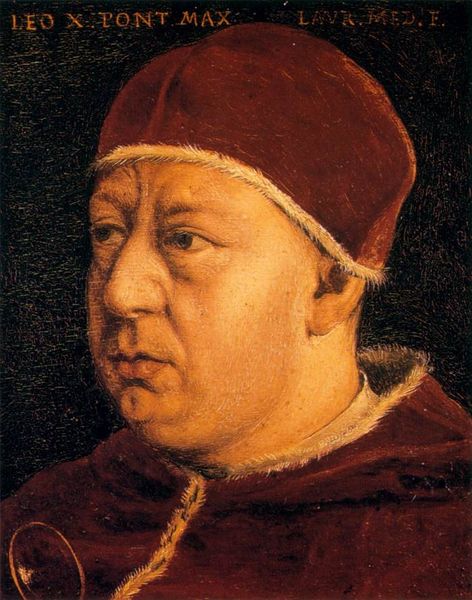
painting, oil-paint
#
portrait
#
painting
#
oil-paint
#
11_renaissance
#
history-painting
#
northern-renaissance
#
portrait art
Copyright: Public domain
Curator: Here we have Lucas Cranach the Elder's 1537 oil painting, "Johannes Bugenhagen," currently housed in the Lutherhaus in Wittenberg. Editor: He has such a severe face. And there's a surprising modernity in the plain background, a sort of washed out teal that seems incredibly bold against his somber black clothing. Curator: Absolutely. It is important to understand portraits of this era, particularly those associated with the Reformation, served specific socio-political functions. Cranach was a key artist within Wittenberg circles, close to Luther himself, and these images helped solidify the Reformation’s leadership. Editor: That plainness does strip away the excess ornamentation, the kind we often see in portraits of nobles. It focuses our attention on the man. What symbols are at play here? His garb, that simple black cap...are they intended to communicate piety? Curator: Definitely. The austerity serves a purpose, distancing them from what they considered the decadent displays of the Catholic Church. It promotes the image of humble servants dedicated to the Word. Editor: So, even in its simplicity, it’s making a powerful visual argument. Bugenhagen himself – wasn't he instrumental in spreading Reformation ideals? Curator: Indeed. He was a close confidante of Luther, a pastor and reformer himself, key in organizing the church in Northern Germany and Denmark. So the portrait functions as a public endorsement of Bugenhagen as an important leader in the Reformation. Editor: You know, looking at it again, his gaze has a remarkable steadiness, a certain confidence that comes through despite the apparent plainness of the composition. It's almost defiant, isn't it? Curator: I think defiant is the right word. The painting captures an era of dramatic social and religious change, but I wonder whether, freed from its time, its symbols of dissent might also mean something different to each modern observer. Editor: The lack of extraneous detail gives the portrait enduring force. And helps that intense, searching gaze transcend its specific context, making him still fascinating nearly 500 years later.
Comments
No comments
Be the first to comment and join the conversation on the ultimate creative platform.

